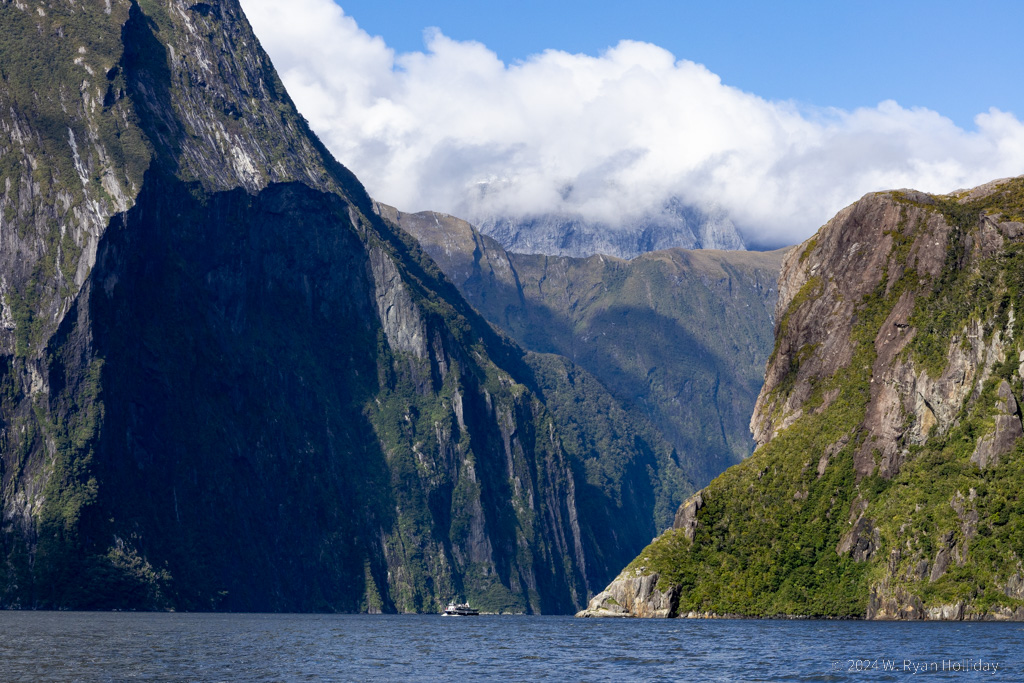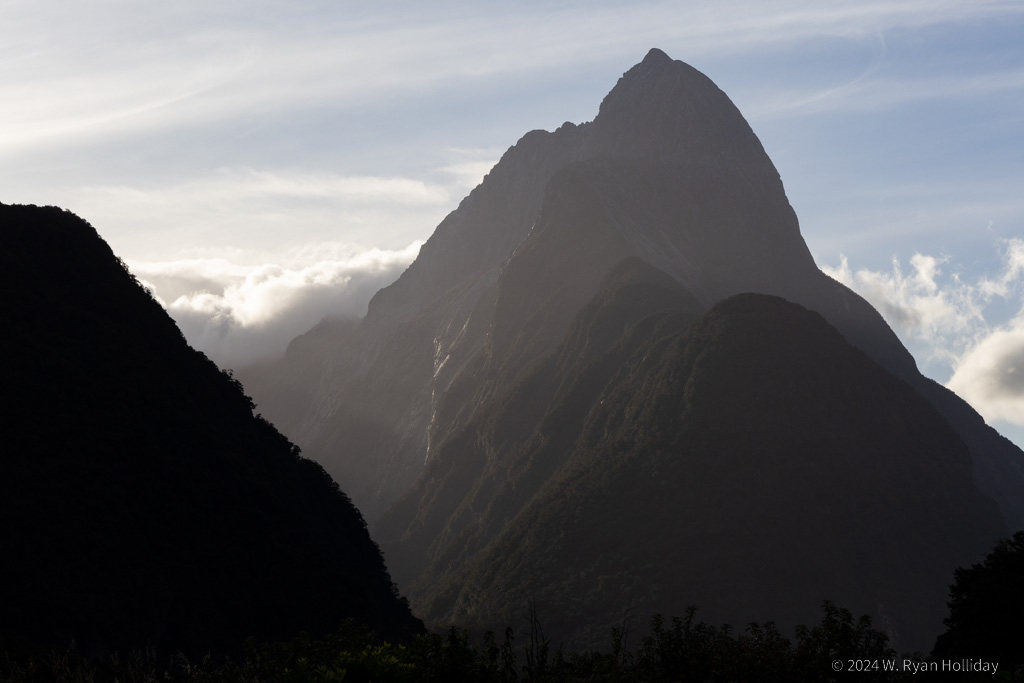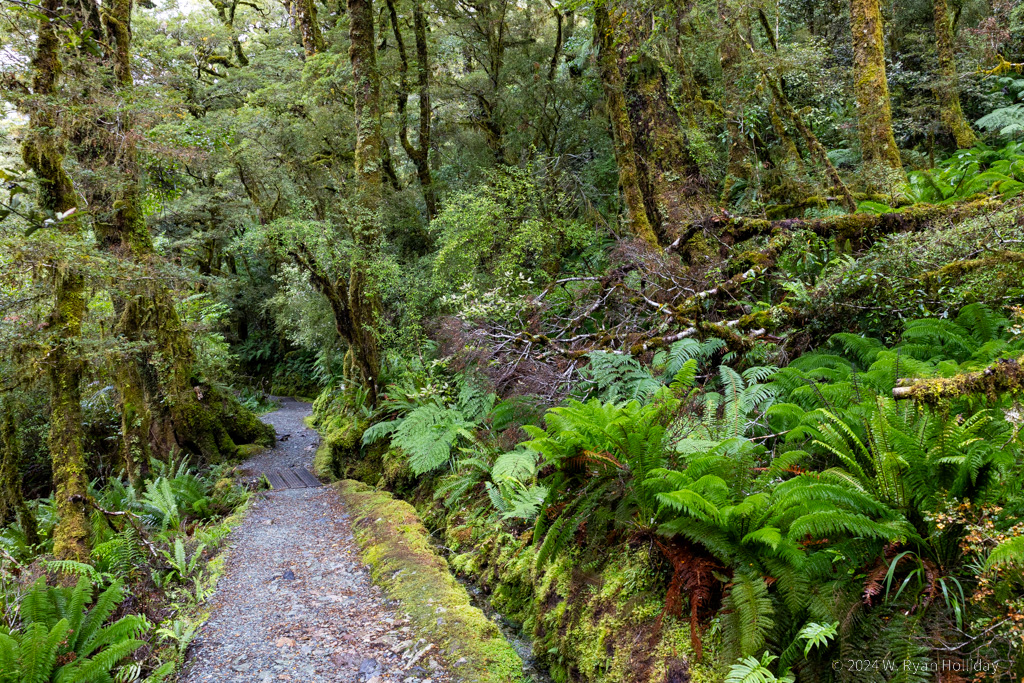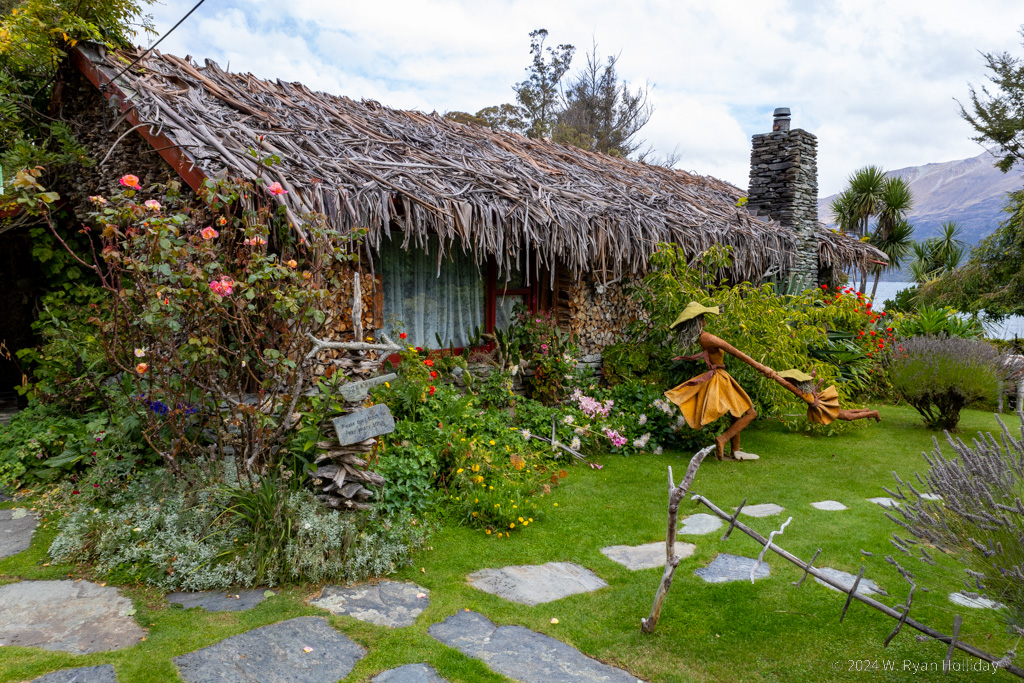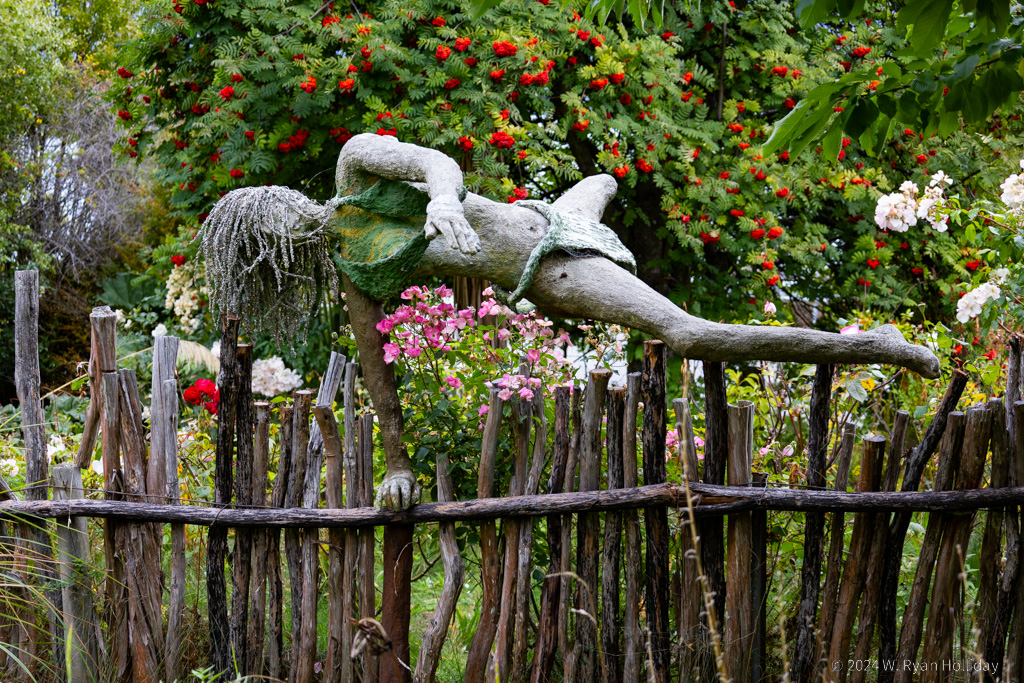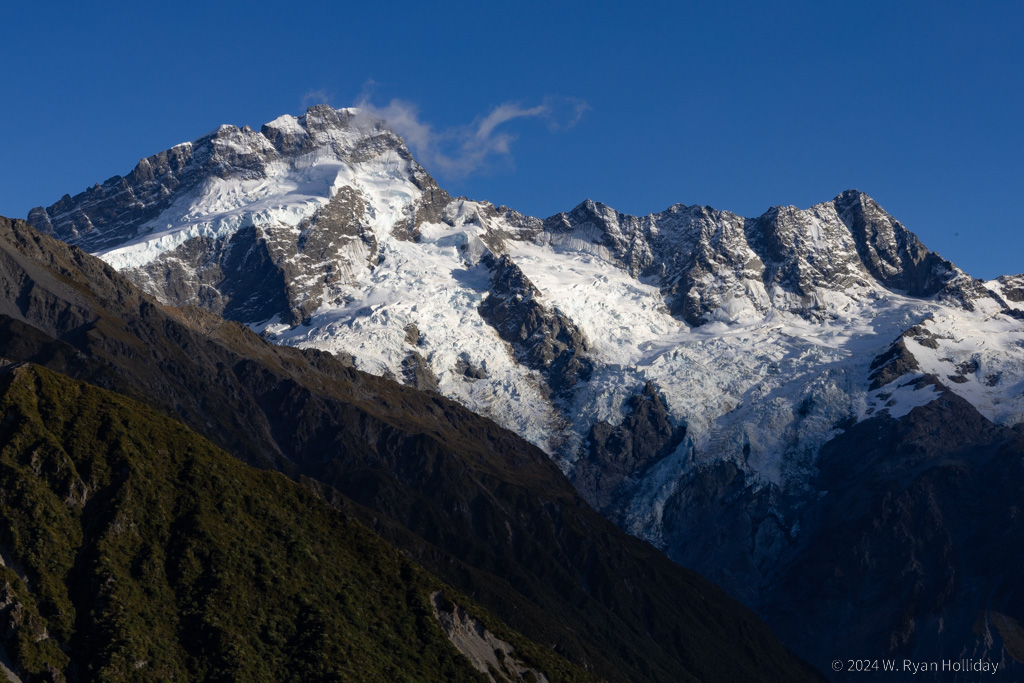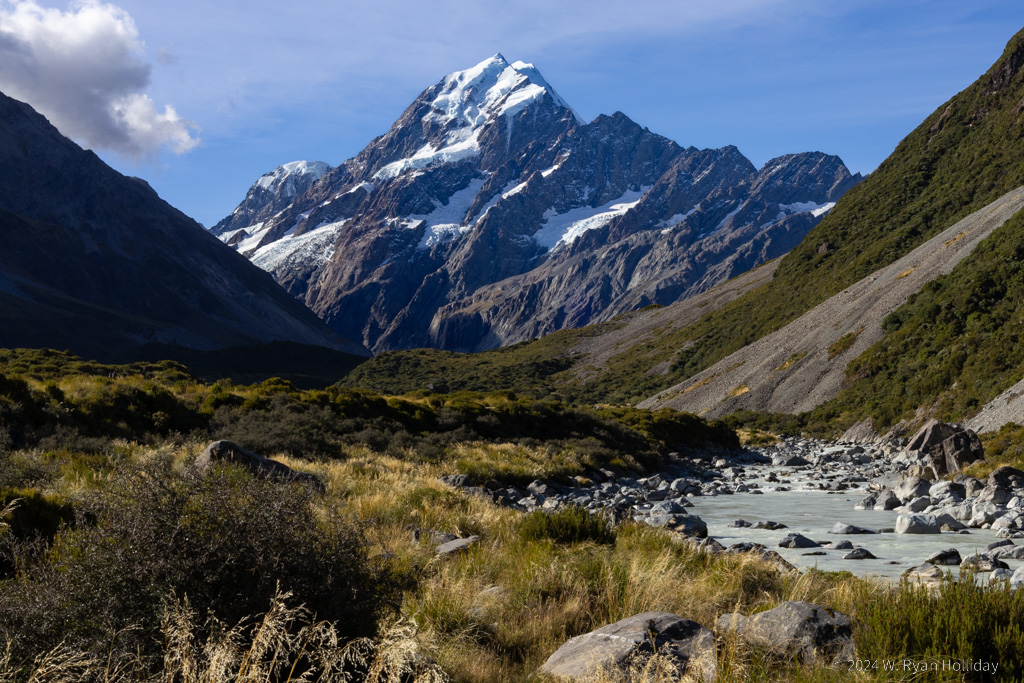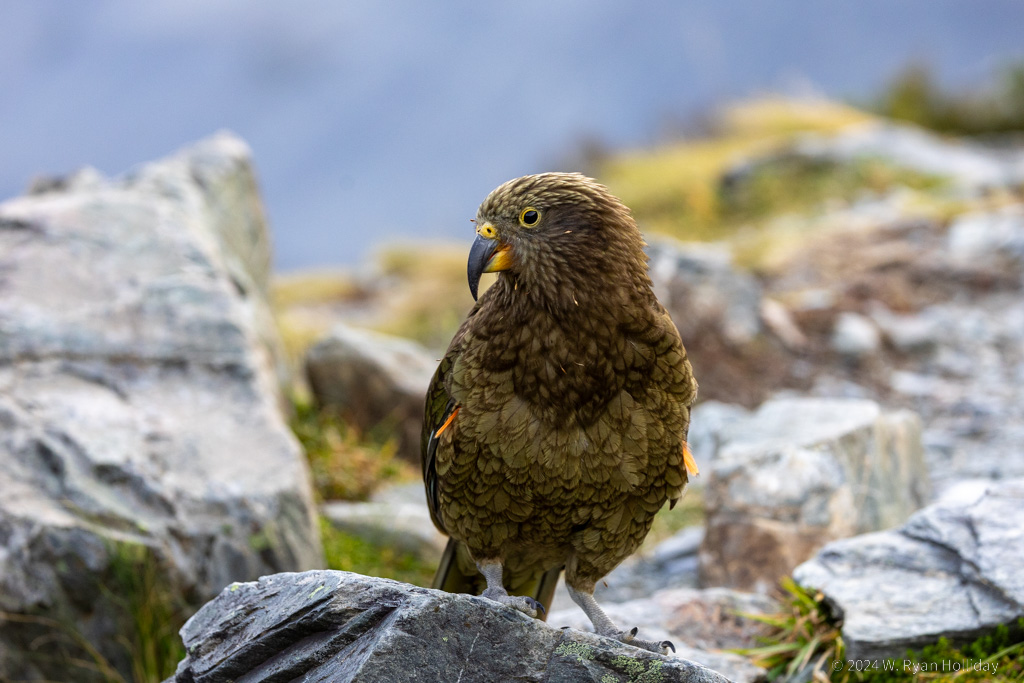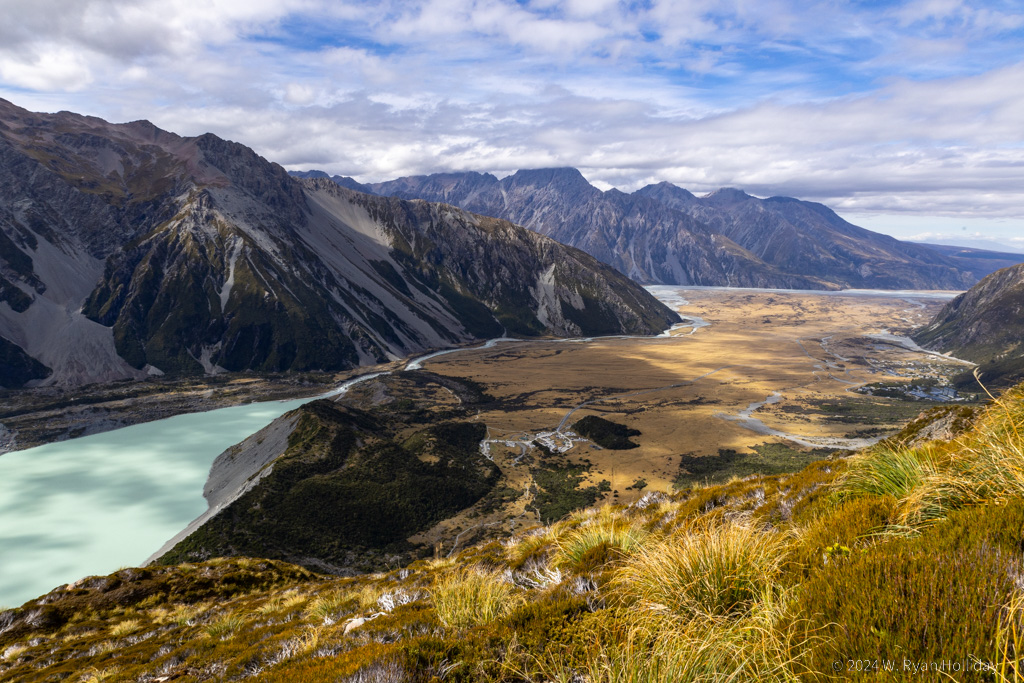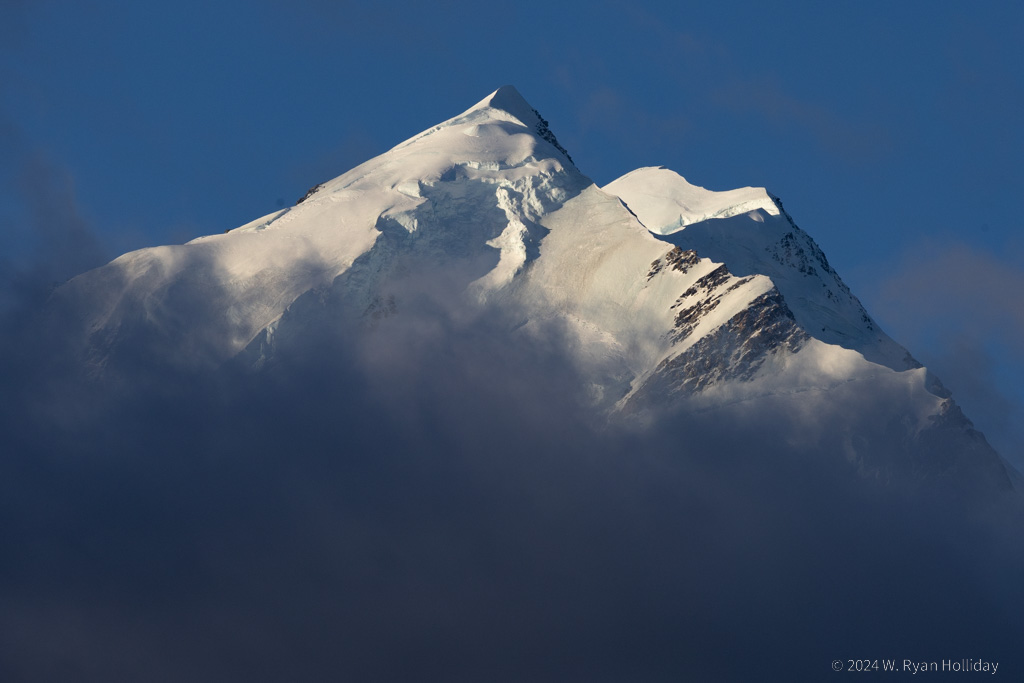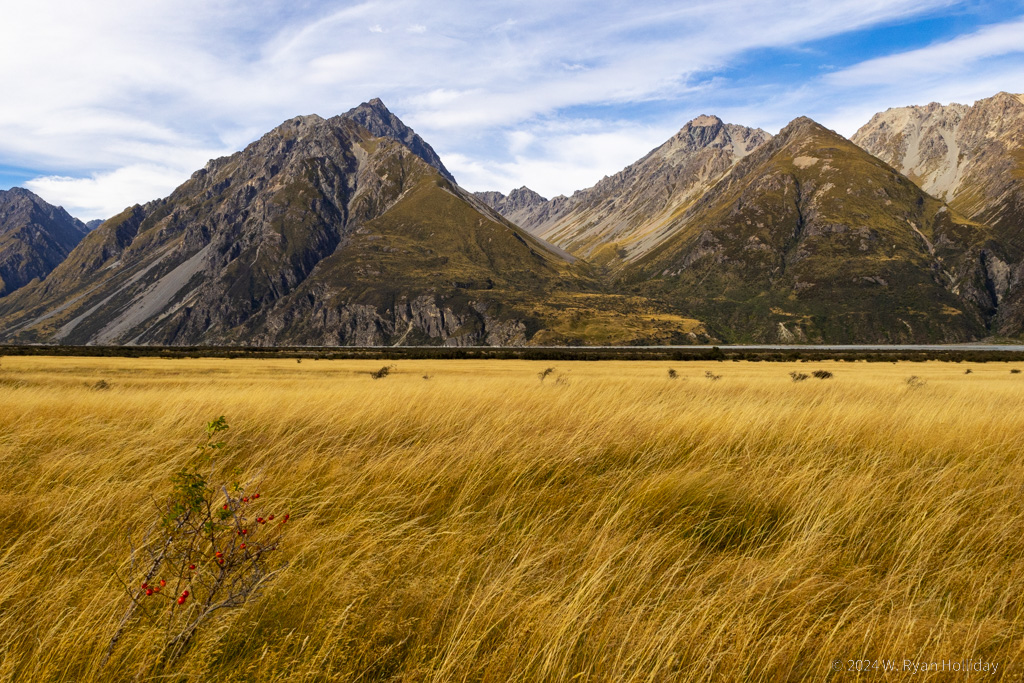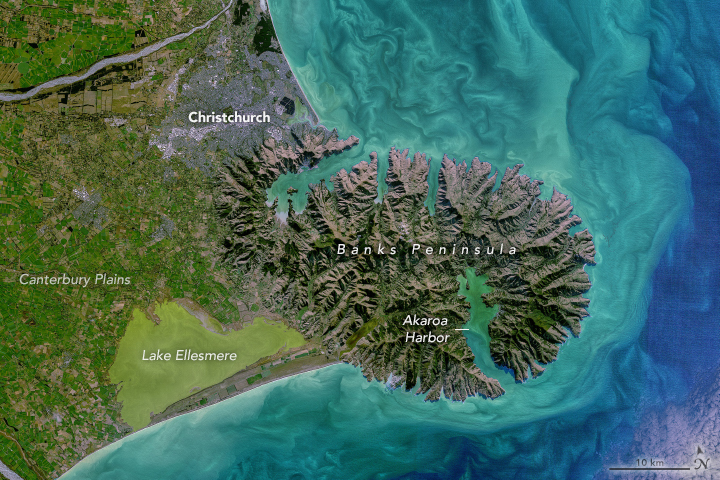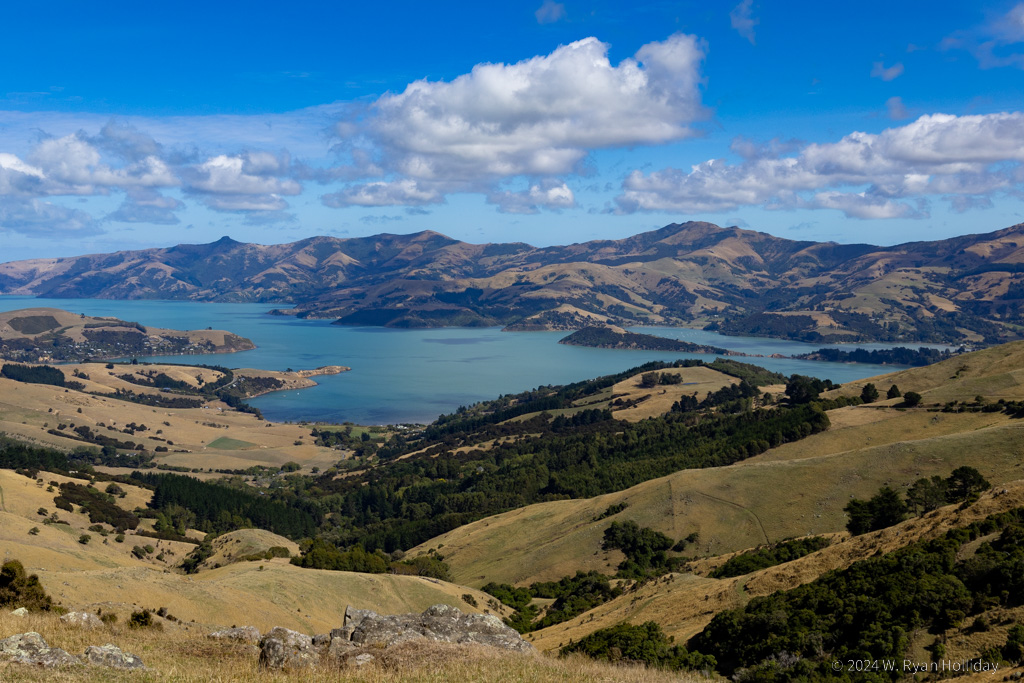After thunderous wind and rain throughout the night, and despite a forecast that called for more of the same, the sun came out this morning in Milford Sound. And this place is beautiful.
The adventure for the day was scuba diving, which meant my first time in a dry suit since the water is frigid. The main diving attraction here is that due to the meters-thick layer of fresh water on the surface, as well as the steep fjord walls, the water is much darker than normal, so you get a lot of deep water species unusually close to the surface, including thousand year old black coral. But given the cold temperatures they strongly recommended a dry suit, and that was a new experience for me. I did the requisite online training a few days ago, but knew as we got in the water to practice a few key skills before our first dive that it wouldn’t be pretty. And I was right.
Unlike normal scuba, where you’re controlling your buoyancy with a BCD, they had us controlling our buoyancy by adding or removing air from the suit and mostly ignoring the BCD. That had the advantage that you’re only worrying about one set of buttons instead of two, but the disadvantage that all of your air goes to the highest point in the suit, so it was ass over teakettle if you got slightly upside down since air rushed to your feet, and you couldn’t do anything since your dump valve is at your shoulder. As the divemaster (correctly) warned would happen to just about everyone at least once, I suffered the ignominy of getting pulled to the surface towards the end of the first dive – I think I could have kicked out of it, but he kept pointing at my shoulder valve and by the time I had gotten upright to start dumping air I was a missile launching from the depths. A common refrain among the many experienced divers who were doing a dry suit dive for the first time today was that this first dive was “neat, but also infuriating”.
As we nursed our wounded pride they told us the second dive was always easier, and that turned out to be true. Whereas the first dive was mostly spent trying to figure out the equipment and how NOT to turn into an underwater runaway train, on the second dive there was a bit more familiarity with what to do and what not to do, so for me it was about 80% spent enjoying the scenery and 20% spent trying to avoid doing something stupid. The black coral (which is actually white) looks like a tree from another planet, and we also saw a large conger eel, a giant (by seahorse standards) seahorse, a small shark, and a bunch of different fish, nudibranchs, and other random marine life. The dive environment was also unique – the top 10-15 feet is freshwater from all of the rain pouring off of the cliffs, which was murky, filled with bits of leaves, and much colder than the seawater layer below. Descending, you would be totally disoriented with zero visibility and reduced buoyancy in the freshwater, then you would hit the saltwater and suddenly you could see again and manage your buoyancy normally.
Aside from the diving, the New Zealand dive crew added some local color to the trip. Cody, one of the two guides, was looking forward to the tourist season ending in a few days and getting ready for the The Great Annual Nude Tunnel Run, which is a yearly event held at the end of the season that traverses the Homer Tunnel, a 1.2 km long tunnel hacked out of solid granite 900 meters above the Sound. As one description of the event clarifies, “it’s not entirely naked because you are allowed to wear running shoes and a headlamp”, while another notes that “it’s at 10:30 at night because, well, trucks and sandflies”. In a similar vein, the skipper Carl asked if we wanted to see a shark shortly after pulling the boat out of the water. With some confusion we followed him down to the dock, where apparently a two meter long sevengill shark sometimes hangs out. He began splashing his hands in the water, but asked us to let him know when the shark was coming so he could get out of the way (side note: the shark was apparently elsewhere today). “I thought you said nothing in New Zealand could hurt you” someone said. Carl looked up, pointed at the land, and said “That’s New Zealand. It’s completely safe.” He then pointed at the ocean and smiled. “There’s stuff in there, though, that will take your leg right off”.
